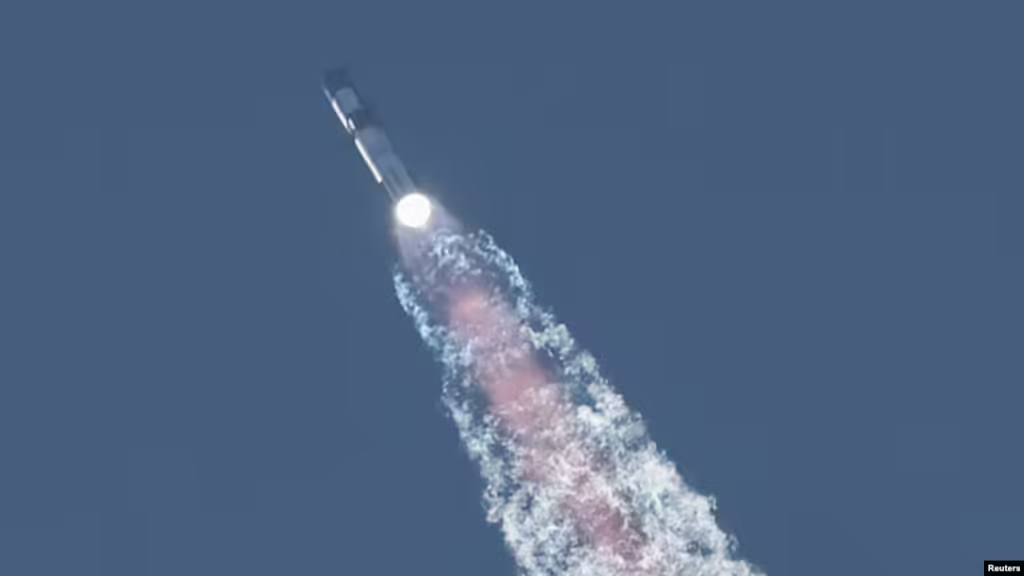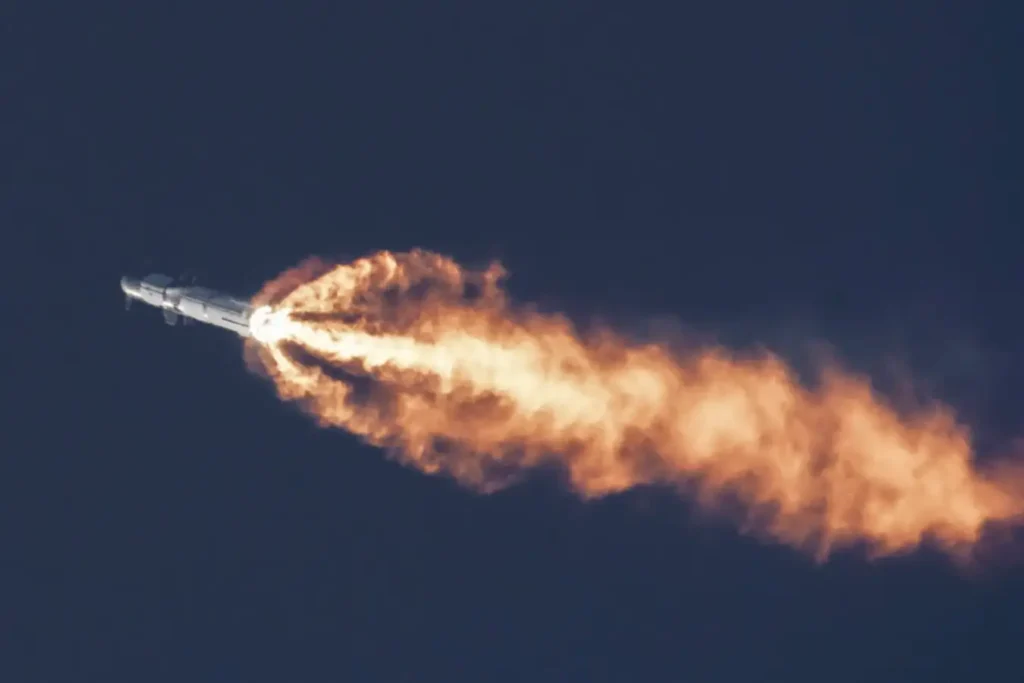The Good
The incident involving the premature re-entry and destruction of 20 Starlink satellites due to a SpaceX Falcon 9 rocket failure highlights several positive aspects of current space operations and technological advancements. Firstly, the robustness of satellite design and the protocols in place ensured that these satellites burned up in the upper atmosphere without posing any danger to the public or other satellites in orbit. This indicates the high standards of safety and environmental precautions that companies like SpaceX employ, which is crucial as space activities increase.
Secondly, the rapid and transparent response from SpaceX, along with their collaboration with the U.S. Federal Aviation Administration (FAA), demonstrates a commitment to accountability and improvement. This open approach to investigating failures helps build trust with the public and regulatory bodies, reinforcing the importance of transparency in the aerospace industry.
Moreover, the incident underscores the importance of continuous innovation and rigorous testing in space exploration. SpaceX’s handling of the failure provides valuable lessons that will contribute to the enhancement of their technologies and processes. This iterative improvement is vital for the advancement of space travel and exploration, which ultimately benefits scientific research, global communication networks, and economic opportunities.
Additionally, despite the setback, the successful landing of the rocket’s first stage on a drone ship highlights the ongoing progress in reusable rocket technology. This milestone is a significant achievement, showcasing SpaceX’s capability to reduce the cost of space missions and enhance the sustainability of space operations. The ability to reuse rocket components effectively can lead to more frequent and affordable space launches, fostering greater access to space for various stakeholders.
Overall, while the loss of satellites is a setback, the event highlights the resilience of space technology, the importance of transparency and continuous improvement, and the significant strides being made towards sustainable and cost-effective space exploration.
The Bad
Despite the positive aspects, the failure of the Falcon 9 rocket and the subsequent loss of 20 Starlink satellites carry several negative implications. Firstly, the incident raises concerns about the reliability and robustness of current space technologies. The failure of the second stage to complete its burn due to a liquid oxygen leak suggests potential vulnerabilities in the design or manufacturing processes. This incident could undermine confidence in SpaceX’s ability to consistently deliver successful missions, which is crucial for their reputation and future contracts.
The premature re-entry and destruction of the satellites also represent a significant financial loss. Each Starlink satellite represents a considerable investment, and losing 20 in a single incident could have substantial economic repercussions for SpaceX. This financial impact is not just limited to the cost of the satellites themselves but also includes the potential revenue loss from delayed or canceled services that these satellites were meant to support.
Furthermore, the grounding of Falcon 9 rockets pending the investigation could disrupt SpaceX’s launch schedule. This delay could affect not only SpaceX’s commercial operations but also the timelines of other projects and missions that depend on their launch services. For example, any delays could impact the deployment of additional Starlink satellites, affecting global internet service coverage and quality, especially in remote or underserved regions.
The environmental impact of space debris is another concern. Although the satellites burned up in the atmosphere, the incident highlights the growing issue of space debris and the need for effective mitigation strategies. The increasing number of satellites in low Earth orbit (LEO) and the potential for collisions or malfunctions pose a threat to both current and future space operations. This incident serves as a reminder of the importance of sustainable practices in space exploration and the need for comprehensive policies to manage space debris.
Lastly, the repeated failures of SpaceX’s rockets, including this recent incident and the previous geomagnetic storm that knocked 40 satellites from orbit, may raise questions about the company’s operational protocols and risk management strategies. These incidents highlight the challenges of space operations and the need for robust contingency plans to mitigate risks and ensure mission success.
In summary, the Falcon 9 rocket failure and the loss of 20 Starlink satellites present significant challenges, including financial losses, operational disruptions, environmental concerns, and questions about the reliability and sustainability of current space technologies.
The Gist
On July 11, SpaceX’s Falcon 9 rocket, carrying 20 Starlink satellites, failed during its second stage due to a liquid oxygen leak, resulting in the premature release of the satellites into a low orbit. Despite efforts to correct the trajectory, all 20 satellites eventually re-entered Earth’s atmosphere and burned up. The incident, confirmed by subsequent observations, did not pose any threat to public safety or other satellites.
The successful landing of the rocket’s first stage on a drone ship showcased SpaceX’s advancements in reusable rocket technology. However, the failure represents a significant financial loss and highlights potential vulnerabilities in SpaceX’s design or manufacturing processes. The incident has prompted an investigation by SpaceX and the FAA, grounding further Falcon 9 launches until the issue is resolved.
This is the first major Falcon 9 failure since 2016 and the largest single loss of Starlink satellites since February 2022. The disruption may affect SpaceX’s launch schedule and the deployment of additional Starlink satellites, potentially impacting global internet service coverage. The event also underscores the growing concerns around space debris and the need for sustainable space exploration practices.
The Take
On July 11, SpaceX launched a Falcon 9 rocket from the Vandenberg Space Force Base in California, aiming to deploy 20 Starlink satellites into orbit. The launch, initially scheduled for the previous day, went as expected at first, with the rocket’s first stage successfully detaching and landing on a drone ship in the Pacific Ocean. However, the mission took a turn when the second stage failed to complete its second burn due to a liquid oxygen leak, leaving the satellites stranded in a low orbit.
The second stage of the Falcon 9 rocket managed to release its payload, but the satellites were stuck in an elliptical orbit with a minimum altitude of 84 miles (135 kilometers), about half the height of their intended operational orbit. This low altitude subjected the satellites to increased atmospheric drag, causing them to gradually lose altitude and eventually re-enter Earth’s atmosphere. Despite attempts by SpaceX to use the satellites’ maximum thrust to regain altitude, all 20 satellites were confirmed to have burned up in the upper atmosphere by July 12.
The incident marks the first major failure of a Falcon 9 rocket since 2016 and the largest single loss of Starlink satellites since a geomagnetic storm caused 40 satellites to fall from orbit in February 2022. The loss of these satellites not only represents a significant financial hit for SpaceX but also raises questions about the reliability and robustness of their space technologies.

The investigation into the failure is being conducted by SpaceX under the supervision of the U.S. Federal Aviation Administration (FAA). Until the investigation is concluded, all Falcon 9 launches have been grounded. This grounding could lead to significant disruptions in SpaceX’s launch schedule, potentially affecting other projects and missions that rely on their launch services.
Despite the failure, the incident also highlighted some positive aspects. The fact that the satellites burned up in the atmosphere without posing any danger to the public or other satellites in orbit demonstrates the effectiveness of safety protocols. Additionally, the successful landing of the rocket’s first stage underscores the progress SpaceX has made in reusable rocket technology, which is essential for reducing the cost of space missions and promoting sustainable space exploration.
The failure of the Falcon 9 rocket has brought attention to the challenges and risks associated with space operations. It serves as a reminder of the importance of rigorous testing, continuous improvement, and robust risk management strategies in the aerospace industry. The incident also highlights the growing issue of space debris and the need for effective mitigation measures to ensure the sustainability of space activities.

Looking ahead, SpaceX will need to address the vulnerabilities exposed by this failure and implement measures to prevent similar incidents in the future. The company’s commitment to transparency and collaboration with regulatory bodies like the FAA is crucial in maintaining public trust and ensuring the continued advancement of space technologies.
In conclusion, while the failure of the Falcon 9 rocket and the loss of 20 Starlink satellites is a setback for SpaceX, it also provides valuable lessons that can drive further innovation and improvement in space exploration. The incident underscores the importance of safety, accountability, and sustainability in the rapidly evolving field of aerospace.





































































